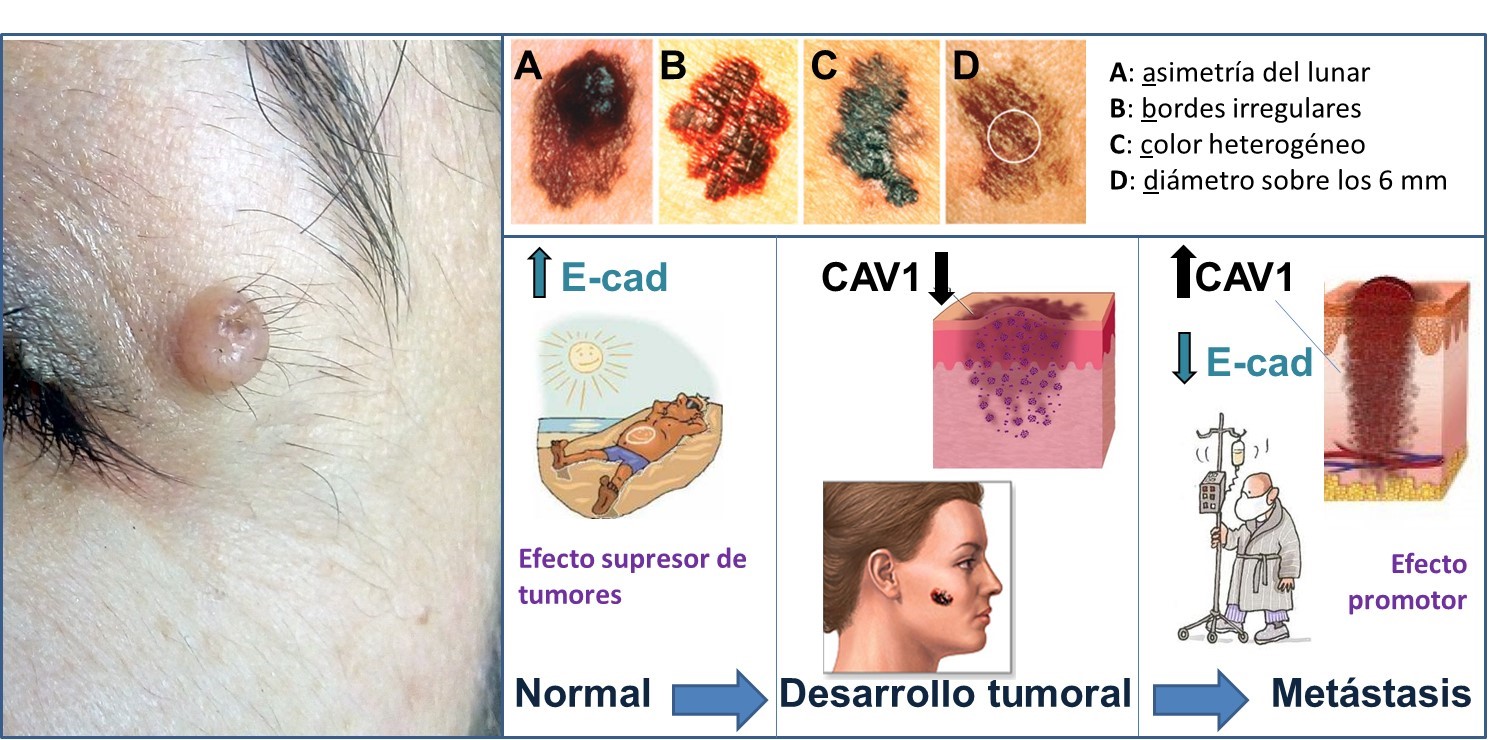Melanoma: don't be fooled by that mole, it could be cancer

Melanoma is a malignant tumor that develops from pigmented cells of the skin, although sometimes it can also occur in the eye and intestine. On May 23, World Melanoma Day was celebrated, a day that aims to raise awareness about the importance of preventing this disease.
Although it is a low frequency cancer, an increase in the population has been shown, both in Chile and elsewhere, especially in the United States, Australia, Europe and the Nordic nations.
As explained in the medical guide canceronline.cl, the aggressiveness of this disease is high, with a mortality rate of between 10% and 20% of the affected population, explains Lorena Lobos González, associate researcher at the Advanced Center for Chronic Diseases ( ACCDiS) and PhD in Biochemistry from the University of Chile.
However, the same document says that when detected in early stages, it can have a very good prognosis, with improvement in around 85% of patients with simple surgical removal.
Factores claves de su incidencia, indica Lobos, se relacionan con el deterioro de la capa de ozono y la mayor exposición a los rayos solares. Situación que puede observarse con más frecuencia en la zona sur de Chile. De hecho, dice, “en la Antártica se ha detectado en la población de pingüinos proliferación atípica en su piel, las que corresponderían a melanoma”.
Además, el uso de solárium, el exceso de pecas o las pieles muy blancas, son factores que predisponen a las personas a tener este problema. Pero además, advierte Lobos, “hay falta de información, preocupación y de cuidado –como la costumbre de no usar bloqueador solar-, lo que a su vez explica por qué muchos pacientes llegan con este cáncer en un estado avanzado, cuando ya la situación es más complicada”.
El melanoma es el tipo de cáncer a piel más agresivo que existe. En Chile, afecta a aproximadamente 2,2% cada 100 mil habitantes. Su diagnóstico clínico obedece a la observación de lunares que comienzan a evolucionar, indica Lobos. De ahí la nomenclatura del “ABCD del melanoma”, que dan cuenta de los cambios que ocurren en el lunar y que evidencian un cáncer: A: asimetría del lunar, B: bordes irregulares, C: color heterogéneo y D: diámetro sobre los 6 mm (Figura 1).
A modo de consejo, resalta Lobos, es importante observar el ejemplo del lunar en la figura 1. “Muchos pacientes que tienen lunares no consultan a un dermatólogo hasta que el tejido ya está muy transformado, es por este motivo que enviamos el mensaje de evaluar cómo evoluciona un lunar, observar su contorno, altura, coloración y bordes. Si algunas de estas características cambian, es mejor evaluar por un especialista clínico”.
Caveolina
The presence of a protein in the body, called Caveolin, plays a dual role in the development of cancer, says Lobos. This means that in early stages it can act as a tumor suppressor, while in advanced stages, as a metastasis promoter (see Figure 1).
The relevance of Caveolin is a research finding, the result of five years of study by Lobos, and published in the international journal Pigment Cell and Melanoma Research.
“Este artículo abrió nuestra investigación a un mundo desconocido, donde la célula tumoral de melanoma se las ingenia para mantenerse comunicada con su entorno, con el objetivo de transformar este entorno y construir un nido, donde una célula tumoral pueda andar y seguir reproduciéndose”, señala Lobos. Sus resultados abren el camino a explorar nuevas terapias contra el cáncer en un modelo murino (cepas especiales de ratones), de características muy similares a lo que pasaría en un ser humano.
Lobos sabe que si bien es difícil hablar de una “cura” contra este mal, gracias a estos descubrimientos, se espera poder modular la presencia de Caveolina al momento de la cirugía resectiva, es decir, cuando se extrae el tumor. “A partir de ese instante, se esperaría que la estrategia médica logre frenar el desarrollo de metástasis. Esta preocupación no es menor, puesto que el Melanoma es un cáncer altamente invasivo. Sobre el 20% de la población que lo padece fallece, documenta la guía científica Canceronline.cl”.
key proteins
The development of cancers is generally a very slow process. It can take between 20 to 30 years, explains Lobos, a period in which various and subtle changes are generated at the cellular level, which, finally, trigger the appearance of tumors.
In this context, research in recent years has focused on the search for genes that act as suppressors or as oncogens, “and at the same time, to the discovery of strategies that allow inhibiting the latter, and on the contrary, helping to promote those 'guardians' that suppress tumors ”, he clarifies.
However, research has also shown that there are genes and proteins like Caveolin that can change their function depending on the context; Lobos points out, specifically the tumor environment and associated protein complexes.
This represents, Lobos explains, a fundamental change in the way of understanding the processes that lead to the development of cancer, and therefore also in how to treat the disease. "Thus, in the case of melanoma, our research group described that Caveolin's tumor suppressor function required the presence of another protein, called Ecadderin."
In the experiments, the team has been able to observe that when the two proteins are together, the suppression of tumors is very powerful, says Lobos, "since they simply do not grow and, then, the survival of the mice is, to say, eternal" .
Under this idea, he indicates, one could think of developing therapies that allow the co-expression of these elements. In this way, thanks to the help of molecular biology, “pieces of DNA could be manipulated, giving tumor cells the sequence of the protein E-cadherin, with the idea of abolishing the metastasis-promoting effect of Caveolin-1, and analyzing the results in live models, ”he says.
The hypothesis of the beneficial union between both proteins is also supported in studies where it has been shown that Ecadine disappears in states of advanced cancer and metastasis. In the same way, its existence has been seen in the initial phases, where it would act as a suppressor, in conjunction with Caveolina. These results would be a step forward, to test different treatments.
"Another positive aspect of the studies is that the investigation of the role of Caveolin has also been done in cell lines derived from other types of cancer, such as colon and breast cancer, demonstrating the same dual role for Caveolin," says Lobos.
The most important thing is that to achieve good therapeutic results the road is long, he clarifies, since it is essential that there is a balance and effective functionality of these proteins, since they do not behave in the same way in all patients and types of cancer. "It is for this reason that our research group is multidisciplinary and strives every day in search of an answer," he says.


